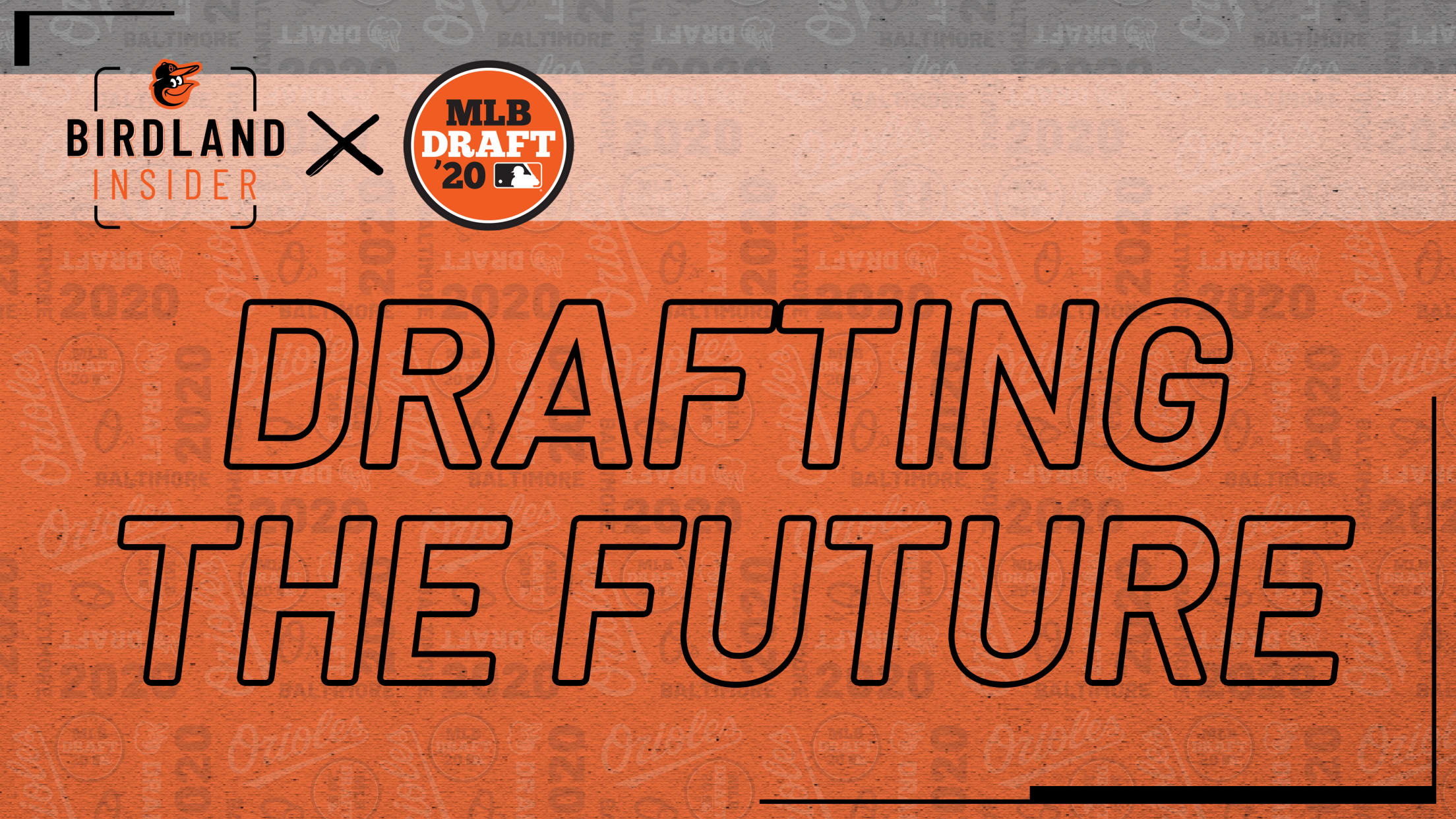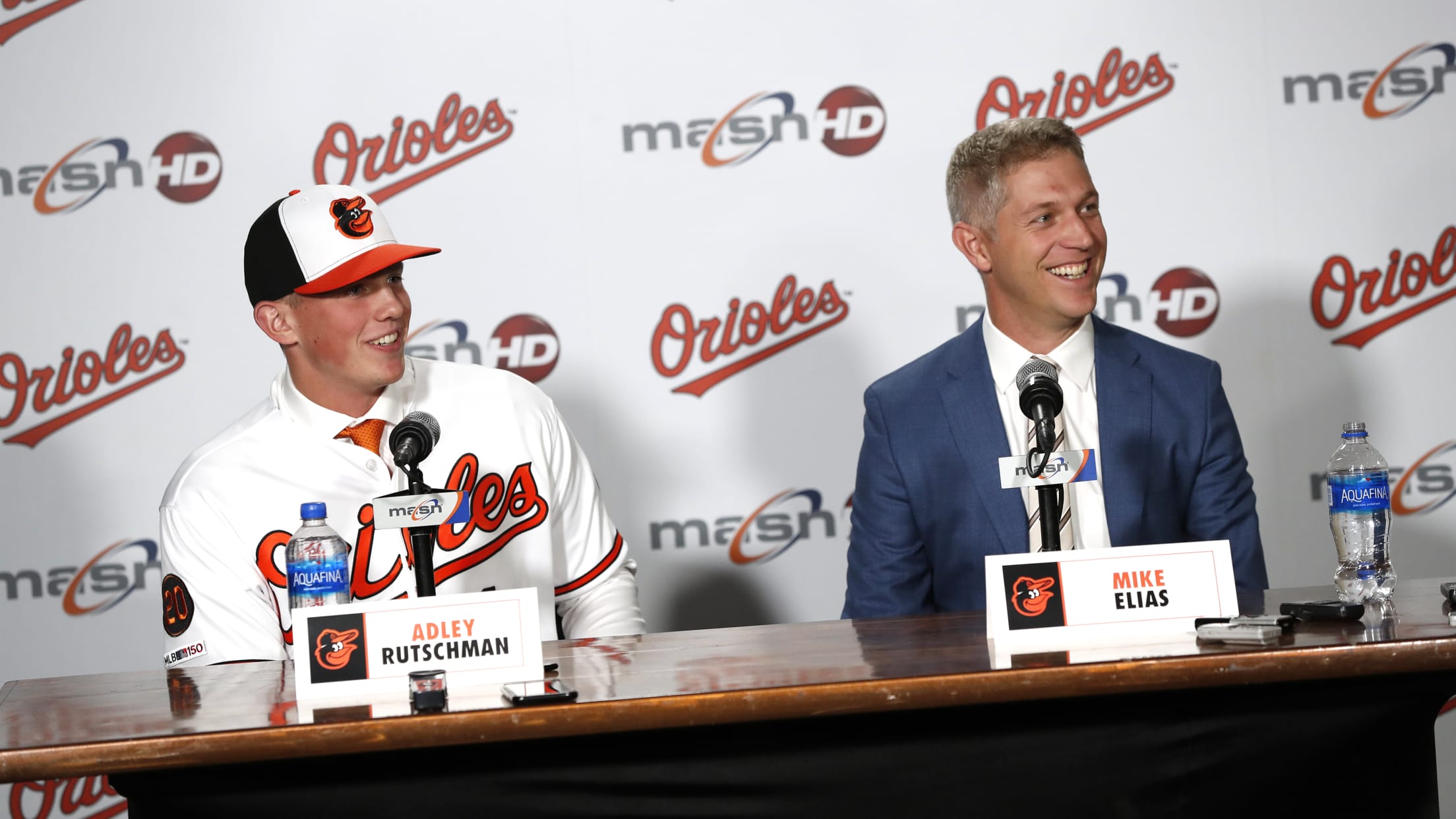
Drafting the future
While much of the sports world has grinded to a halt as a result of the ongoing pandemic, the Baltimore Orioles baseball operations staff has remained busy as they prepare for the upcoming First-Year Player Draft. After taking Adley Rutschman with the No. 1 overall selection in 2019, the Orioles have another opportunity to add a potential franchise cornerstone to the organization with the second overall pick in 2020. Although the draft will look drastically different this year, with every aspect being executed virtually, its impact on the future of the Orioles cannot be understated. Each selection that the club makes will provide an infusion of talent to a farm system that is already ranked among the top half of professional baseball organizations.

During his first year as Orioles Executive Vice President and General Manager, Mike Elias overhauled the baseball operations department, setting the club up for sustained success in the coming years. He revamped the Orioles’ player development system, revitalized the club’s international scouting presence, and expanded the team’s analytics department. But the draft is where the second-year general manager really shines.
Elias has been here before. He’s been part of a multi-year rebuild, and he’s been a key part of the decision-making process for top picks. In fact, he was involved in three No. 1 overall selections in Houston from 2012-14, as well as in Baltimore last season. He’s been mastering his craft ever since he jumped into the scouting profession. This level of preparation has made him comfortable and confident heading into June 10, just what you need from your organizational leader.

“A lot of our attention has been directed towards debating the candidates for the No. 2 pick, but we also have a tremendous opportunity given that we have pick No. 30 and also pick 39 to really impact our organization and our farm system,” Elias shared during a conference call earlier in the week. “We think this is a good draft class. The abrupt end to the baseball season this spring has definitely made the scouting process different. I think it will affect the nature of the draft a little bit, but it certainly has not prevented us from making quality evaluations of these players and having enough players at each pick to get us through the rounds.”
An added benefit for the Orioles and Elias is that his longtime colleague and friend, Sig Mejdal, will once again be by his side through the draft process. The two have found a good balance between Elias’ scouting background and Mejdal’s analytical prowess, and are looking forward to their second draft in Baltimore.

“Scouting the draft is something that Mike has been very good at, as well as not losing energy as the draft goes on and taking those later round picks very seriously,” added Mejdal, who worked with Elias in the Houston Astros and St. Louis Cardinals organizations before joining him in Baltimore as Orioles Vice President and Assistant General Manager, Analytics.
Even with the firepower Elias and Mejdal bring, it takes more than two top baseball minds to conduct a Major League Baseball draft, even this year’s abbreviated five-round draft. The draft is still a long and grueling process for all front offices in baseball, and one that Orioles Supervisor of Domestic Scouting Operations Brad Ciolek describes as a team effort that starts years in advance.
“Our scouts are always on the lookout for players. Not only for this draft class, but also for guys that might be eligible down the road, whether they’re high schoolers or guys who we have followed throughout their high school careers and are now underclassmen at college,” Ciolek shared with MASN’s Paul Mancano in a video interview last week. “Our scouts are working on the next year’s class typically five to seven days right after the draft ends.”
It’s not just the second overall pick that Elias, Mejdal, Ciolek, and their scouts have to prepare for, but all six picks, as every round brings an opportunity to add depth to the organization. Additionally, they will have the opportunity to sign undrafted players once the draft has concluded. All this work leads to a big board scattered with the names of hundreds of potential draftees and signees.
“We have a lot of guys that we liked initially for the draft when it was 40 rounds, and then 10 rounds, and now five. So, we’re not taking anything for granted. We’re talking to a lot of these guys that potentially are in our mix for the sixth round, if there was a sixth round. We’re still treating this entire process like we’re going to draft them,” Ciolek shared with Mancano.
One thing is for certain: of the hundreds of prospects the Orioles have their eyes on, none of them are expected to have an immediate impact with the big league club in 2020 or 2021. Unlike the NFL or NBA, where draft picks play a key role in a team’s improvement the following season, the MLB draft preaches patience and a detailed plan for each player to work their way up to the big league club over time.
This situation plays out like a double-edged sword. On one side, teams could wait years for their research, work, and effort to reap the benefits. But it also allows them full freedom to draft whomever they feel is the best player, as the make-up of the Major League roster does not play a role in who they draft. Elias stresses the importance of this point and knows trusting this process can pay off.
“It’s a very important distinction for fans who are more familiar with the football or basketball drafts than with the baseball draft. The players take a little longer to reach the Major League roster. Because of that, you’re not quite sure what your Major League roster is going to look like when this player arrives. On top of that, the sport is fairly unpredictable, so the last thing you want to do is pass over what you feel is a superior talent because of what is going on with your Major League roster at the time of the draft,” said Elias
Choosing the best player available all depends on what skills and intangibles your staff values most, which can be subjective from one team to another. Teams could be deciding between drafting an 18-year-old high school senior and a 21-year-old college junior with multiple years against high-level competition. So how do they compare drafting an athlete who might not be done growing yet to one who has seen more consistent competition? Elias explains how this type of situation can separate the struggling from the successful.
“One of the skills that is developed through becoming an experienced scout is making the apples to oranges comparison of college and high school players,” stated Elias. “They are very different age groups, so it requires a lot of experience in both of those markets to be able to compare them relative to one another.”

On the high school side, a key step in the evaluation process is getting started early.
“We identify them as early as freshman or sophomore year in high school, and really start bearing down on them in the summer leading into their senior year,” said Ciolek.
Elias and Mejdal both agree that more information is usually available for college players and is seen as more reliable due to the higher level of competition and resources.
“In college players, you do have quite a bit more information because of the availability and quality of their statistics. Also, there is a lot of ballpark technology now at major colleges, Trackman and so forth,” explained Elias.
Mejdal added, “For the college player, you have more reliable performance data. They’ve played two or three years in college and likely one or two summer leagues, often at a high level. There’s more performance data to sink your teeth into. The high school guys, so many of them are getting pitched around and their statistics resemble Babe Ruth’s that there’s less to squeeze out of that.”
The high school versus college decision mostly comes down to trusting the process, counting on your scouts and evaluators, and not pre-determining the path you want to take before draft day.
“If you never draft high school players, you are going to miss out on a lot of superstars because a lot of them come from the high school ranks. It just requires a lot of draft experience, and that’s where our scouts and our evaluators come in,” said Elias.
As the draft grows near, the final preparations begin. Normally, the Orioles would send scouts to view prospects for a second or third time and hold scouting meetings and regional workouts. However, the impact of the coronavirus pandemic has changed the way the club must approach these final, critical evaluations.

“It been a little bit of a speed bump. But I will give credit to our entire staff for how they adjusted to the transition,” Ciolek told Mancano. “It is a little bit different because typically over the course of the spring you see guys who make leaps and bounds and climb draft boards because of their performance. And now, we’re essentially relying on four weeks’ worth of video and their track record from previous years. There was a little bit of an adjustment period, but overall as a group we responded really well, and I’m pleased with the outcome. I think we’re well prepared and we’ll be ready when it’s time to line them up and make our selections.”
While the draft provides the Orioles’ brass a chance to add depth and talent to their budding farm system, it will also provide fans across the country with a welcome escape during a year that has been filled with challenges and uncertainty, something Elias certainly understands.
“I hope that we can change the story of this year before it’s over, and I hope that baseball is a big part of that.”


